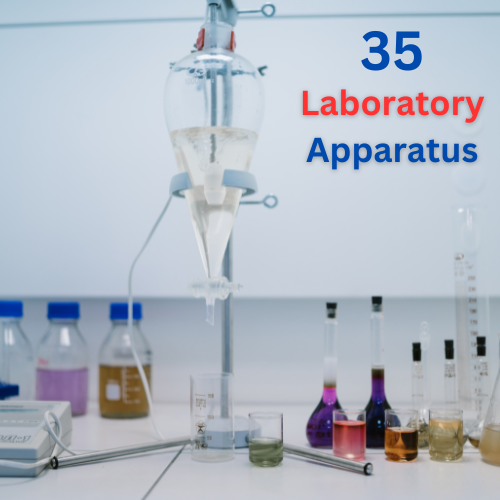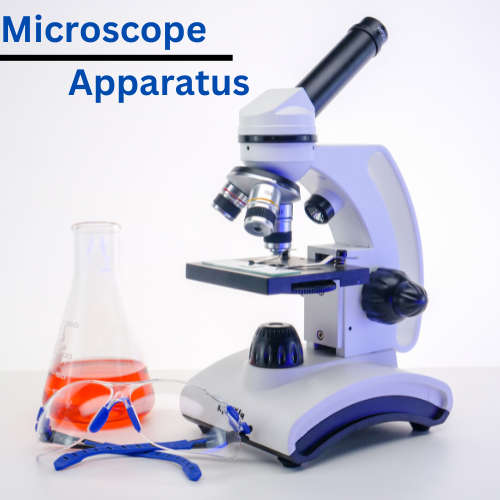What is an Apparatus in the Laboratory?
Introduction:
A Laboratory apparatus refers to any tool, instrument, or equipment used in a scientific laboratory for conducting experiments, measurements, and analyses. These apparatuses help scientists, researchers, and students perform tasks such as heating substances, measuring volumes, mixing chemicals, and observing reactions.
Types of Laboratory Apparatus
Lab apparatus can be categorized based on their function:
1. Measuring Instruments
Used to measure quantities such as volume, mass, temperature, or length. Examples:
1). Graduated Cylinder
Measures liquid volumes with accuracy.
2). Burette
Used for titration to deliver precise amounts of liquid.
3). Pipette
Transfers small liquid volumes accurately
4). Volumetric Flask
Prepares precise volumes of solutions.
5). Balance (Electronic or Analytical)
Measures mass.
6). Thermometer
Measures temperature.
2. Glassware for Containing and Mixing
Used for storing, mixing, and reacting chemicals. Examples:
1). Beaker
Holds, mixes, and heats substances.
2). Erlenmeyer Flask
Conical-shaped flask used for mixing and heating.
3). Test Tubes
Small cylindrical tubes for holding small samples.
4). Watch Glass
Holds small amounts of solid or for evaporation.
5. Petri Dish
Used for growing microbial cultures.
3. Heating and Cooling Equipment
Used to heat or cool substances for reactions. Examples:
1). Bunsen Burner
Provides an open flame for heating.
2). Hot Plate
Heats substances without an open flame.
3). Water Bath
Heats substances gently and evenly.
4). Centrifuge
Separates substances based on density by spinning.
5). Refrigerator/Freezer
Stores temperature-sensitive substances.
4. Separation and Filtration Equipment
Used to separate substances based on properties like solubility or density. Examples:
1). Filter Paper & Funnel
Used for simple filtration.
2). Separatory Funnel
Used to separate immiscible liquids.
3). Distillation Apparatus
Separates liquids based on boiling points.
4). Chromatography Equipment
Used for separating mixtures.
5. Support and Holding Equipment
Used to support other apparatuses and reactions. Examples:
1). Retort Stand and Clamps
Holds glassware in place.
2). Wire Gauze
Supports flasks/beakers on a tripod.
3). Crucible Tongs
Handles hot crucibles.
4). Mortar and Pestle
Grinds solid substances.
6. Microscopic and Imaging Equipment
Used for magnifying and observing small structures. Examples:
1). Microscope
Magnifies small objects like cells.
2). Slides and Cover Slips
Holds specimens for microscopy.
7. Safety Equipment
Used for protecting researchers and ensuring safe experiments. Examples:
1). Safety Goggles
Protects eyes from chemicals.
2). Gloves
Shields hands from hazardous substances.
3). Lab Coat
Protects clothing and skin.
4). Fume Hood
Ventilates hazardous fumes.
Conclusion
Laboratory apparatuses are essential for conducting experiments safely and efficiently. Each tool serves a specific function, and proper handling is necessary to ensure accurate results and maintain safety in the lab.
Common Laboratory Apparatus: Detailed Overview
Common Laboratory Apparatus are tools and devices used in scientific research, diagnostics, and industrial applications to measure, analyze, and manipulate materials. These instruments vary in complexity, from simple measuring devices to highly sophisticated analytical machines.
- Spectrophotometers (UV-Vis, IR, Atomic Absorption) Used for analyzing the absorption and emission of light in samples.
- Chromatography Systems (HPLC, GC, TLC) Separate and analyze chemical mixtures.
- Mass Spectrometers (MS) Identify chemical composition by measuring mass-to-charge ratios.
- Electrochemical Analyzers (pH meters, Conductivity meters) Measure chemical properties of solutions.
- Light Microscopes Basic tool for magnifying samples.
- Electron Microscopes (SEM, TEM) Provide high-resolution images of microstructures
- Fluorescence & Confocal Microscopes Used for cellular and molecular imaging.
- Incubators Maintain temperature and conditions for growing cultures
1 review for "Laboratory instruments"
Vikas Kumar - 01 Jan 2024
We bought H.L. Scientific Industries Laboratory instruments for our school.They are working well. And students are able to observe their slides easily. Laboratory instruments
You May Also Like
Verified Scientific And Laboratory Industries Supplier
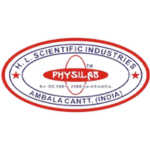
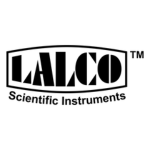

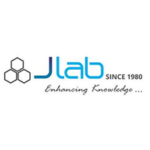



SEquipment
Scientific Equipment India is a B2B portal based in Ambala, Haryana, specializing in a wide range of scientific and laboratory instruments. We Are offerings include scientific equipment, physics lab equipment, laboratory instruments, pharmacy lab equipment, chemistry and biology apparatus, laboratory glassware, forensic science models, medical equipment, hospital furniture, heating and cooling instruments, analytical instruments, and microscopes. The platform connects buyers with verified suppliers, aiming to simplify the procurement process for educational and research institutions.
Ambala, Haryana, India
info@sciencequipment.in
+91 82781-58988
Products Links
Products Links
Get Products List
© Scientific Equipment All Rights Reserved. Designed by GLOBAL SEO AGENCY

